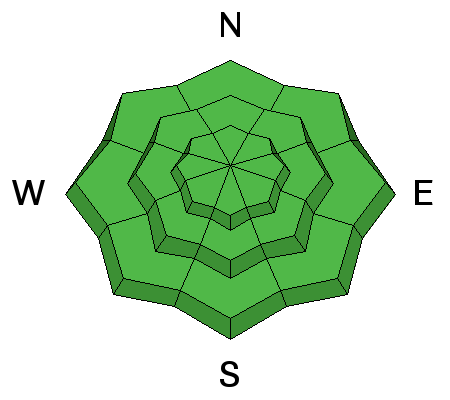25th Annual Black Diamond Fall Fundraising Party
Thursday, September 13; 6:00-10:00 PM; Black Diamond Parking Lot

25th Annual Black Diamond Fall Fundraising Party
Thursday, September 13; 6:00-10:00 PM; Black Diamond Parking Lot
| Advisory: Salt Lake Area Mountains | Issued by Drew Hardesty for Saturday - February 10, 2018 - 5:57am |
|---|
 |
special announcement The UAC Marketplace is still open. Our online marketplace still has deals on skis, packs, airbag packs, beacons, snowshoes, soft goods and much more. Benefit the Utah Avalanche Center when you buy or sell on eBay - set the Utah Avalanche Center as a favorite non-profit in your eBay account here and click on eBay gives when you buy or sell. You can choose to have your seller fees donated to the UAC, which doesn't cost you a penny |
 |
current conditions Skies are overcast with mountain temperatures in the low to mid-20s, about ten degrees cooler than yesterday. Westerly winds are 15-20mph with gusts to 30, but should lose steam over the course of the day. If we're lucky, we just may pick up a trace to an inch of snow today. Snow depths are 45-55" in the sheltered upper elevations. Amid various sun and wind crusts, skiing and riding conditions remain quite good, although lower elevation exits remain a touch thin and threadbare. (Broads Fork, BCC) Our Week in Review for February 2-8: |
 |
recent activity None |
| type | aspect/elevation | characteristics |
|---|


|


|

LIKELIHOOD
 LIKELY
UNLIKELY
SIZE
 LARGE
SMALL
TREND
 INCREASING DANGER
SAME
DECREASING DANGER
|
|
description
Theoretically speaking, the following must be true for one to keep a constant risk threshhold: When the danger goes up, the terrain choices go down...and when the danger goes down, the terrain choices go up. Which brings me to my outing into Broads Fork yesterday, on the uptrack of a run called Bonkers. The danger was Low, there were no signs of instability, and yet with a couple snow pits, I just did not like what I was seeing. Test results were not necessarily alarming, but I did not like the strong over weak structure. The last pitch to gain the Broads/Stairs Gulch ridge enters into classic terrain we commonly talk about as a place with potential trigger points: steep, thin, and rocky terrain harboring poor structure. Upper elevation northeast facing. We bailed and went up canyon to find better snow structure and better runout zones. Full observation here. But one doesn't need to be a snow scientist to see the white over gray mess of a snow structure below. Bottom Line: The terrain probably wouldn't have avalanched, but probably wasn't good enough. Don't fall asleep during an overall Low danger. |
 |
weather Light snowfall today may add up to an inch or two, maybe. Central Utah and southern Utah county mountains may see 1-3" or so. Winds will be from the northwest, dropping to 10-15mph. Temperatures will be in the low teens. We'll see clearing skies tonight and tomorrow with another weak storm for Monday afternoon with 2-4" possible. Mid-week to the weekend looks uninteresting but maybe a glimmer of something just beyond the 7 day time frame. Maybe. |
| general announcements CLICK HERE FOR MORE GENERAL INFO AND FAQ The UAC has new support programs with Outdoor Research and Darn Tough. Support the UAC through your daily shopping. When you shop at Smith's, or online at Outdoor Research, REI, Backcountry.com, Darn Tough, Patagonia, NRS, Amazon, eBay a portion of your purchase will be donated to the FUAC. See our Donate Page for more details on how you can support the UAC when you shop. Benefit the Utah Avalanche Center when you buy or sell on eBay - set the Utah Avalanche Center as a favorite non-profit in your eBay account here and click on eBay gives when you buy or sell. You can choose to have your seller fees donated to the UAC, which doesn't cost you a penny This information does not apply to developed ski areas or highways where avalanche control is normally done. This advisory is from the U.S.D.A. Forest Service, which is solely responsible for its content. This advisory describes general avalanche conditions and local variations always occur. |